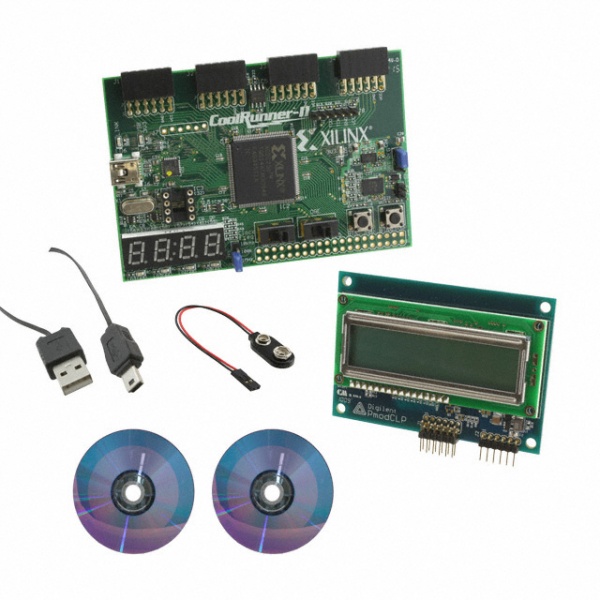Difference between revisions of "Xilinx ISE Lab No. 1: Schematics Input"
(→Introduction) |
(→Installation of ISE V13 on Windows 7) |
||
| Line 19: | Line 19: | ||
=Installation of ISE V13 on Windows 7= | =Installation of ISE V13 on Windows 7= | ||
| − | The first step is to install the ISE | + | The first step is to install the ISE. It is a long process that can take more than an hour, so be prepared and start early! |
| + | |||
| + | The steps described below describe the installation of the most recent version of the ISE in April 2012: '''ISE 13.4''' | ||
| + | |||
* Go to [http://www.xilinx.com/support/download/index.htm Xilinx's Download site] | * Go to [http://www.xilinx.com/support/download/index.htm Xilinx's Download site] | ||
* Download ISE 13.4 full installer for windows | * Download ISE 13.4 full installer for windows | ||
| − | * <onlysmith> userId: thiebau@cs.smith.edu, password: xilinx03ecto</onlysmith> | + | * When asked for a userId and password, you can either create your own Id or use this one: |
| − | * Next | + | ** <onlysmith> userId: thiebau@cs.smith.edu, password: xilinx03ecto</onlysmith> |
| − | * | + | * Click '''Next''' |
| − | * Unpack tar file into directory (in Dowloads folder) | + | * The file should start downloading. It takes about 30 minutes on a wireless connection. |
| − | * | + | * Unpack tar file into directory (in '''Dowloads''' folder). If Windows complain that it doesn't know how to unpack a file with a '''tar''' extension, download the [http://www.7-zip.org/ 7-zip] open-source utility, and use it to unpack the archive. |
| − | * Pick WebPack when asked for what to install | + | * Once in the exploded directory, run the '''xsetup''' application |
| + | * Pick '''WebPack''' when asked for what to install | ||
* Accept all defaults and install in C:\Xilinx folder | * Accept all defaults and install in C:\Xilinx folder | ||
| − | |||
| − | |||
=References= | =References= | ||
<references /> | <references /> | ||
Revision as of 08:54, 16 April 2012
--D. Thiebaut 16:53, 14 April 2012 (EDT)
This lab is an introduction to Xilinx ISE and to the CoolRunner-II kit. Unfortunately the CoolRunner-II and its programming utility from Digilent works only with Windows XP, so we won't be able to download the design into the CPLD chip, but we can still energize and test the design with the ISE Simulator.

Introduction
Xilinx's ISE is "Xilinx ISE[1] is a software tool produced by Xilinx for synthesis and analysis of HDL designs, which enables the developer to synthesize ("compile") their designs, perform timing analysis, examine RTL diagrams, simulate a design's reaction to different stimuli, and configure the target device with the programmer." [1]
The goal of this lab/tutorial is to get the reader familiar with the process of designing a simple digital electronic circuit, compiling it, and verifying it correct behavior with a simulator.
Knowledge of digital logic (basic gates, flip-flops, Moore machines) is assumed.
This lab is based on the excellent series of labs created for the CoolRunner CPLD by Tiffany Liu in her Independent Study in the CS. Dept. at Smith College.[2]
Installation of ISE V13 on Windows 7
The first step is to install the ISE. It is a long process that can take more than an hour, so be prepared and start early!
The steps described below describe the installation of the most recent version of the ISE in April 2012: ISE 13.4
- Go to Xilinx's Download site
- Download ISE 13.4 full installer for windows
- When asked for a userId and password, you can either create your own Id or use this one:
-
This section is only visible to computers located at Smith College
-
- Click Next
- The file should start downloading. It takes about 30 minutes on a wireless connection.
- Unpack tar file into directory (in Dowloads folder). If Windows complain that it doesn't know how to unpack a file with a tar extension, download the 7-zip open-source utility, and use it to unpack the archive.
- Once in the exploded directory, run the xsetup application
- Pick WebPack when asked for what to install
- Accept all defaults and install in C:\Xilinx folder
References
- ↑ Xilinx ISE, captured on wikipedia.org, April 2012.
- ↑ Tiffany Liu, CSC270 Labs on the CoolRunner-II, Independent Study, Fall 2011, cs.smith.edu/classwiki.